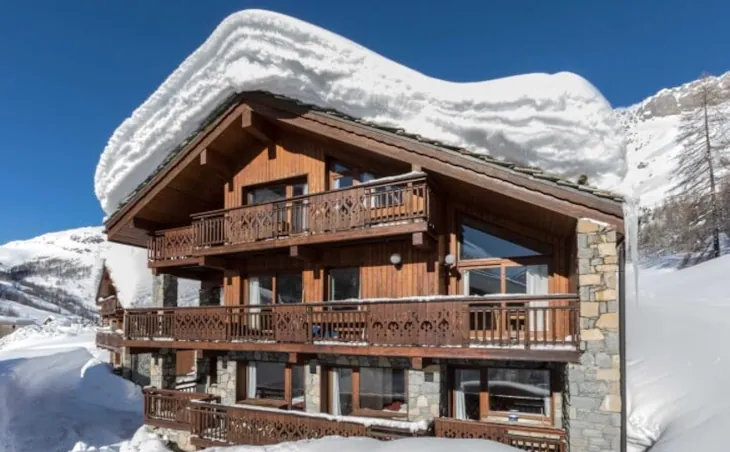If you’re planning a ski trip in 2025/6 and want to guarantee the best possible snow conditions, altitude and geography matter just as much as snowfall totals. Some Alpine resorts consistently deliver reliable snow cover thanks to their glaciers, high-altitude pistes, and north-facing slopes. Using 10 years of snowfall data, here’s a breakdown of the top 10 snow-sure ski resorts in the Alps – places where winter feels long, white, and dependable.
Table of Contents
- Zermatt, Switzerland – 10-year average snowfall: 414 cm
- Cervinia, Italy – 10-year average snowfall: 566 cm
- Tignes, France – 10-year average snowfall: 669 cm
- Val d’Isère, France – 10-year average snowfall: 581 cm
- Saas-Fee, Switzerland – 10-year average snowfall: 547 cm
- Les Deux Alpes, France – 10-year average snowfall: 309 cm
- Alpe d’Huez, France – 10-year average snowfall: 438 cm
- St. Anton, Austria – 10-year average snowfall: 387 cm
- Ischgl, Austria – 10-year average snowfall: 543 cm
- Avoriaz, France – 10-year average snowfall: 638 cm
- What 10 Years of Snowfall Data Tell Us
- High variability year to year
- Glaciers remain the most resilient – but they’re shrinking
- Epic snow years still happen
- Lower slopes remain vulnerable
- Final Takeaway
- Zermatt, Switzerland – 10-year average snowfall: 414 cm
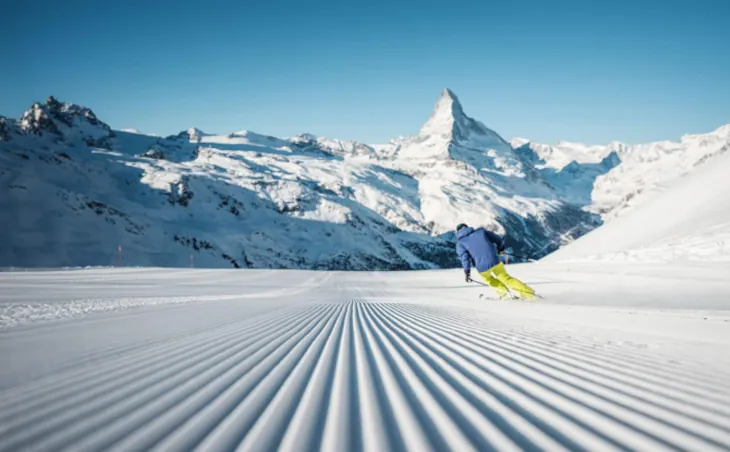
Snow record: With the iconic Matterhorn towering overhead, Zermatt is renowned for its consistent conditions. Skiers can carve turns on the Matterhorn Glacier up to 3,883 m, making it one of the highest ski areas in Europe.
Why it’s reliable: Year-round skiing on the glacier ensures snow cover, and the resort’s altitude means good conditions well into late spring.
Search for a ski holiday in Zermatt
- Cervinia, Italy – 10-year average snowfall: 566 cm
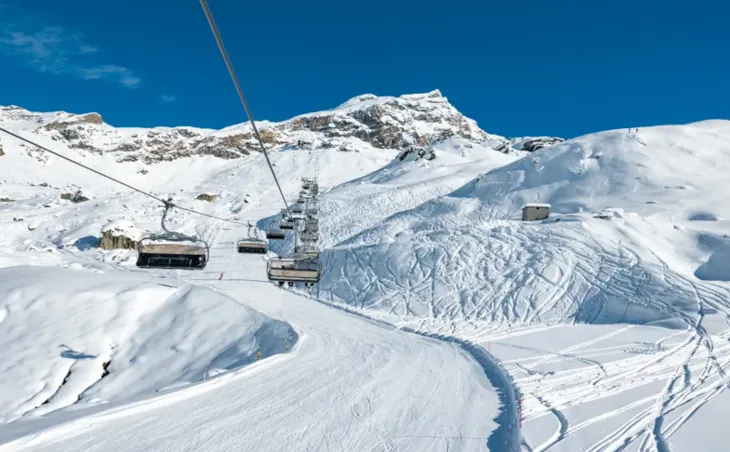
Snow record: Sharing the same glacier as Zermatt, Cervinia enjoys long, snow-sure seasons.
Why it’s reliable: At 2,050 m, it’s one of the highest resorts in Italy, with wide north-facing slopes that hold snow exceptionally well. Bonus: You can ski across the border into Switzerland.
Search for a ski holiday in Cervinia
- Tignes, France – 10-year average snowfall: 669 cm
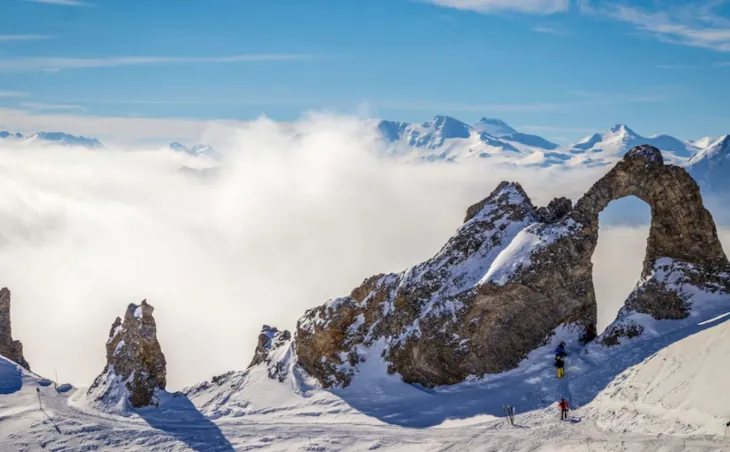
Snow record: Tignes is blessed with both a strong snowfall history and access to the Grande Motte Glacier (3,456 m).
Why it’s reliable: Open from autumn through late spring, glacier skiing ensures snow even in leaner winters.
Search for a ski holiday in Tignes
- Val d’Isère, France – 10-year average snowfall: 581 cm
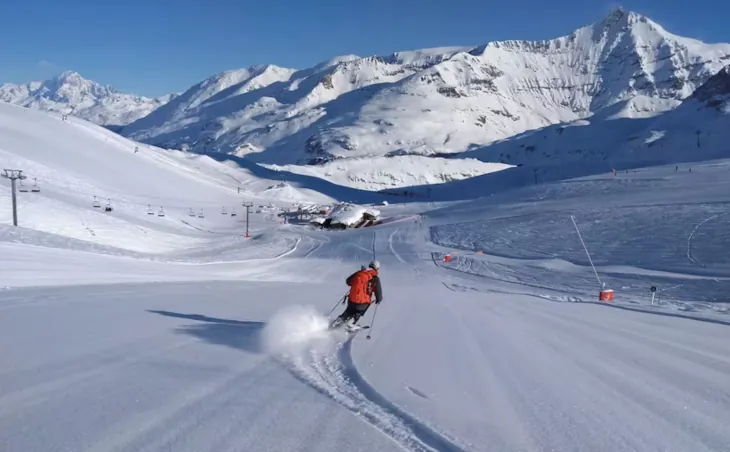
Snow record: Linked with Tignes, Val d’Isère forms the legendary Espace Killy ski area with a huge variety of terrain.
Why it’s reliable: The resort’s high-altitude slopes and consistent coverage make it one of France’s safest snow bets.
Search for a ski holiday in Val d’Isère
- Saas-Fee, Switzerland – 10-year average snowfall: 547 cm
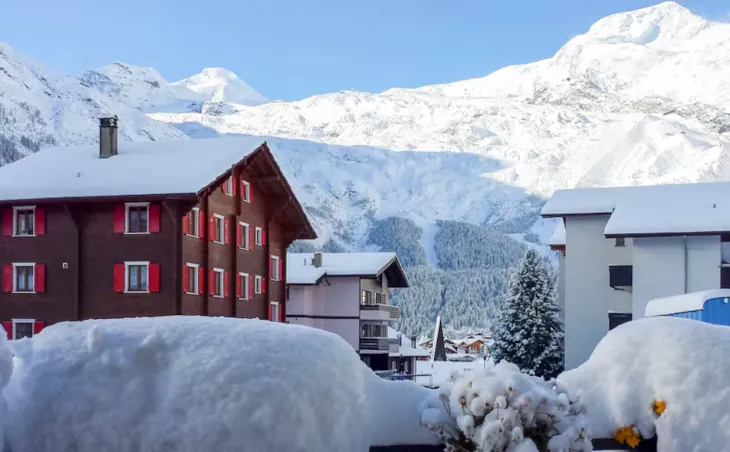
Snow record: Nicknamed the “Pearl of the Alps,” Saas-Fee is famous for its glacier terrain and dependable conditions.
Why it’s reliable: With pistes up to 3,600 m, it’s among the most snow-secure destinations in Europe.
Search for a ski holiday in Saas Fee
- Les Deux Alpes, France – 10-year average snowfall: 309 cm
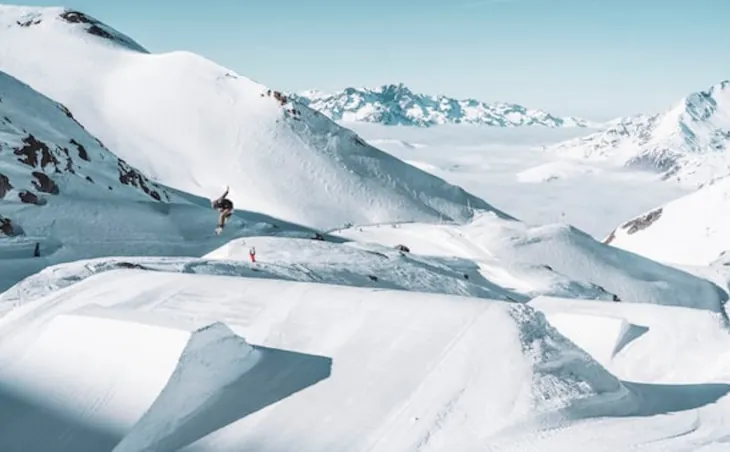
Snow record: Despite a lower average than some rivals, Les Deux Alpes benefits from glacier access at 3,568 m.
Why it’s reliable: One of Europe’s largest glaciers keeps the season long, with skiing possible from early winter to late spring.
Search for a ski holiday in Les Deux Alpes
- Alpe d’Huez, France – 10-year average snowfall: 438 cm
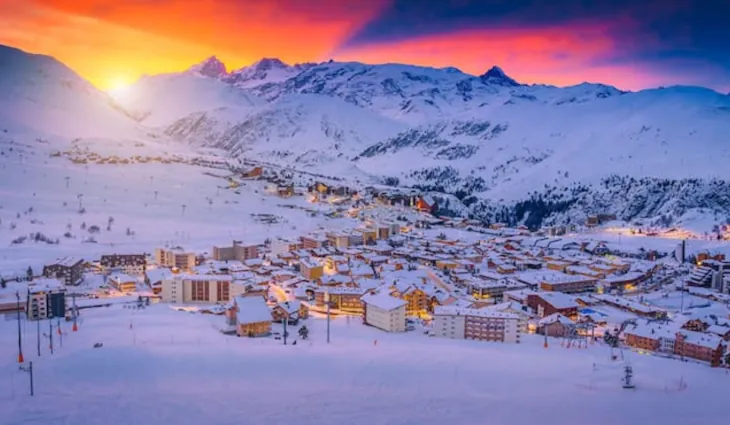
Snow record: The higher reaches, particularly around Pic Blanc (3,330 m), receive excellent snow.
Why it’s reliable: The vast vertical drop and high north-facing slopes help preserve snow even in warmer spells.
Search for a ski holiday in Alpe d’Huez
- St. Anton, Austria – 10-year average snowfall: 387 cm
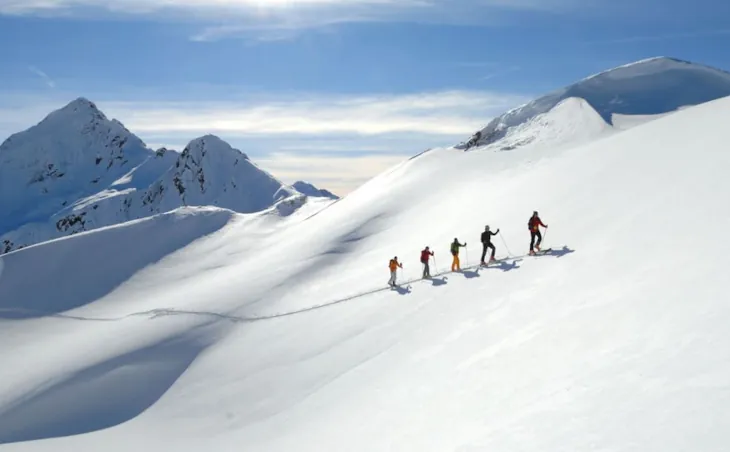
Snow record: St. Anton sits in the Arlberg region, famous for some of the heaviest snowfalls in the Alps.
Why it’s reliable: Regular storms bring deep snowpacks year after year, making it a freeride paradise.
Search for a ski holiday in St Anton
- Ischgl, Austria – 10-year average snowfall: 543 cm
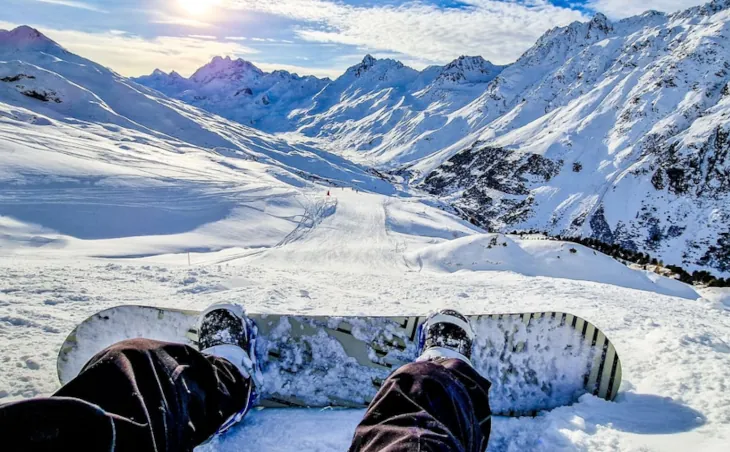
Snow record: Ischgl enjoys strong snowfalls and a long season that often extends into May.
Why it’s reliable: High-altitude skiing (up to 2,872 m), north-facing terrain, and meticulous piste grooming keep conditions excellent.
Search for a ski holiday in Ischgl
- Avoriaz, France – 10-year average snowfall: 638 cm
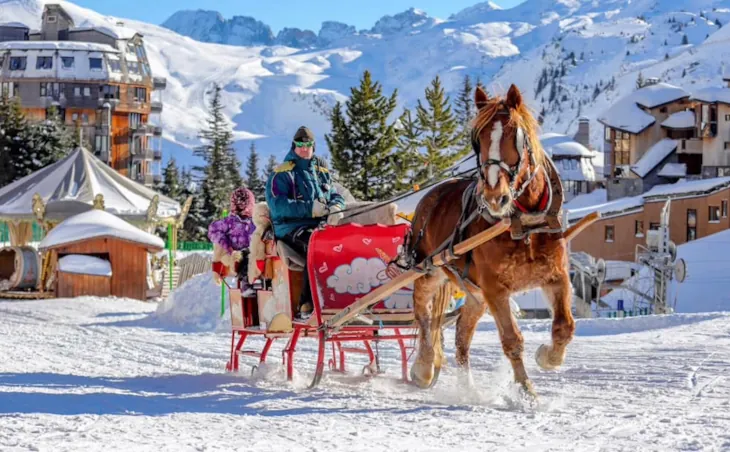
Snow record: Frequently among the snowiest resorts in the Alps, Avoriaz can see 11–12 metres in big winters.
Why it’s reliable: At 1,800 m, it’s entirely ski-in/ski-out, with north-facing slopes that hold onto the snowpack.
Search for a ski holiday in Avoriaz
What 10 Years of Snowfall Data Tell Us
Snowfall across the Alps can vary dramatically from season to season, but the past decade highlights some clear trends:
High variability year to year
Even snow-sure resorts experience fluctuating seasons. Some winters deliver record-breaking totals, while others are much lighter. High-altitude and glacier-linked areas, however, reduce the risk of completely poor snow years.
Glaciers remain the most resilient – but they’re shrinking
Resorts like Zermatt, Cervinia, Tignes, and Saas-Fee have historically had the most reliable snow thanks to glaciers. However, recent summers have seen rapid glacier retreat, which threatens long-term summer skiing and may reshape the Alpine landscape in decades to come.
Epic snow years still happen
The Alps have enjoyed some truly remarkable winters in the last decade – including heavy, late-season dumps in 2022–23 and again in April 2025. These events boost averages but also bring avalanche risks and travel disruption.
Lower slopes remain vulnerable
Even in snow-rich resorts, village-level runs can struggle in warmer winters. Most major resorts now invest heavily in snowmaking to keep lower connections open, ensuring skiers can still return to base.
Final Takeaway
For skiers chasing snow security, the safest bets are high-altitude resorts with glacier access – they offer the longest and most reliable seasons. That said, snowfall in the Alps is still highly variable, and planning flexibility is key. If you want the best chance of powder days, focus on destinations like Zermatt, Tignes, Val d’Isère, Saas-Fee, and St. Anton, where history shows the odds are firmly in your favour.
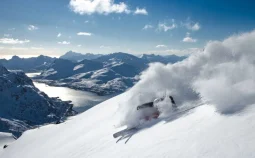 All Ski Deals
All Ski Deals